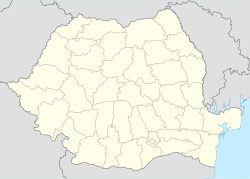Gângiova facts for kids
Quick facts for kids
Gângiova
|
|
|---|---|
| Country | |
| County | Dolj County |
| Time zone | UTC+2 (EET) |
| • Summer (DST) | UTC+3 (EEST) |
Gângiova is a small community located in the country of Romania. It's part of a larger area called Dolj County. Think of a commune like a small town or a group of villages that work together under one local government. It's a way for people in rural areas to manage their local services and community life.
Contents
What is a Commune?
A commune is a type of local government area, a bit like a small district or a township in other countries. In Romania, communes are usually made up of one or more villages. They are important because they help organize things like local schools, roads, and public services for the people living there. It's how communities manage their daily lives and make decisions together.
Where is Gângiova Located?
Gângiova is found in the southwestern part of Romania, within Dolj County. This area is part of a historical region known as Oltenia. Dolj County is mostly flat, with fertile lands that are great for farming. The famous Danube River flows not too far from this region, which has always been important for trade and travel.
Geography of Dolj County
Dolj County, where Gângiova is located, has a landscape that is mostly plains. This means the land is quite flat, which is good for growing crops. You'll find many fields and farms around here. The climate is generally mild, with warm summers and cold winters, which is typical for this part of Europe.
Life in a Romanian Commune
Life in a commune like Gângiova often revolves around community and nature. Many people in these areas work in agriculture, growing crops or raising animals. Communes are usually peaceful places where neighbors know each other well. Children often go to local schools, and families participate in community events and traditions. It's a chance to experience a more traditional way of life compared to big cities.
Community and Traditions
In Romanian communes, traditions are often very important. People celebrate holidays with special customs, music, and food. Local markets are common, where farmers sell their fresh produce. These communities often have a strong sense of identity, passed down through generations.
History of the Region
The area around Gângiova has a long history, like much of Romania. For centuries, people have lived here, often relying on the land for their survival. The region has seen many changes, from ancient times to the present day. Each village and commune has its own unique story, shaped by the people who have lived there and the events that have taken place.


